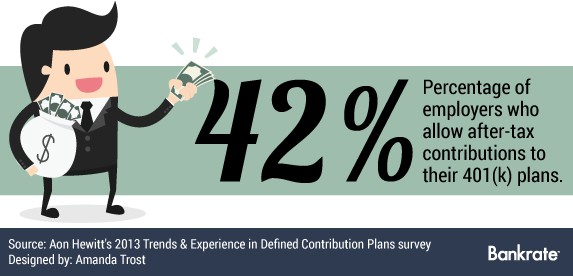401(K) to IRA Rollover How Does it Work Tax Implications
Post on: 15 Май, 2015 No Comment

August 31, 2013 By admin
Oftentimes, when an individual leaves his or her place of employment, they will need to decide what to do with the savings they have built up over time within their employer-sponsored 401(k) plan.
Typically, individuals will have three choices. They could:
- Leave the funds in the employer-sponsored retirement plan
- Take receipt of the funds
- Rollover the funds to a personal IRA (Individual Retirement Account)
The first two options are generally not beneficial to the individual. This is because the employee gives up a great deal of control when leaving the funds as-is, and by taking actual receipt of the money, the person will be subject to both tax and an early withdrawal penalty (if under the age of 59 1/2) on the withdrawn monies.
By conducting a 401(k) to IRA rollover, however, the individual can ultimately gain much more control over what their funds will be invested in. In addition, a direct transfer or rollover will also not trigger any negative penalties or taxation.
IRA Investment Choices
Rolling over funds to an IRA can open many new investment opportunity doors for an investor. For example, rather than just being stuck with certain stocks or mutual funds, investors who choose to open their own self-directed IRA can also invest in physical assets such as gold and other precious metals.
In addition, top gold and metals companies such as Regal Assets make it very convenient for investors to initiate the 401(k) to IRA rollover process directly online. This can speed up the overall fund transfer and allow the investor to more quickly get his or her gold investments working for them.
How the Process Works
In order to initiate the rollover process, investors should go directly to the website of the company that will be receiving their 401(k) funds. From there, IRA setup forms can be downloaded and subsequently filled out.
Once the paperwork has been submitted, the administrator of the investors current 401(k) plan will be contacted and notified regarding how and where to send the individuals retirement plan funds.
Should an investor have any questions, they can typically have them answered quickly by a customer service rep via email or toll-free telephone. They may also speed up the process even further by conducting a live online chat with an IRA rollover expert.
Plan Distributions That Are Eligible for a 401(k) to IRA Rollover
Nearly any type of retirement plan distribution can be rolled over into an Individual Retirement Account. There are, however, some exceptions. These include:
- A required minimum distribution
- A hardship distribution
- A deemed distribution from a loan
- A distribution of excess contributions and related earnings
- Dividends on employer securities
- A distribution that is one of a series of substantially equal payments
- The cost of life insurance coverage.
Possible Tax and Penalty Implications
It is important that investors be careful when transferring or rolling over 401(k) plan funds to an IRA account. This is because taking actual receipt of such funds for a certain period of time could trigger an IRS penalty in the amount of 10% of the funds received.
Therefore, according to the Internal Revenue Service (IRS). investors who take receipt of their qualified funds must complete their 401(k) to IRA rollover by the 60th day following the day on which they received the 401(k) plan distribution.
Taking the Next Step
Investors who are ready to take the next step in rolling over their 401(k) funds into a personal IRA account should work with a company that has experience and a good reputation in this area.
Prior to moving 401(k) funds to any company, investors are encouraged to research and review several potential IRA or gold IRA specialty firms. This way, one can obtain a realistic comparison of how each company operates, as well as the quality of products and advice that are provided by each.














